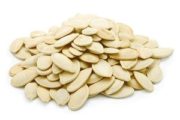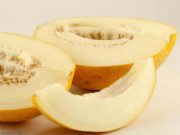How to dry grain and green beans at home - preparing beans for the winter
Beans are legumes rich in protein. Both pods and grains are used for culinary purposes. Bean pods with young seeds are a source of dietary fiber, vitamins and sugars, and the grains, in their nutritional value, can be compared to meat. In folk medicine, peeled valves are used. They are used for therapeutic purposes in diabetes mellitus. How to preserve such a healthy vegetable for a long period of time? The main methods of preparing beans are freezing and drying. We will talk about how to properly dry beans at home in this article.
How to dry beans
Beans intended for drying are collected in August – September. At the end of the growing season, when the tops have already completely withered, they are torn out along with the roots. Bushes with pods are hung at some distance from the ground. To preserve the harvest as much as possible, a piece of fabric is placed under the tops. The grains released from the pods during natural drying fall onto the fabric, after which they can be easily collected.
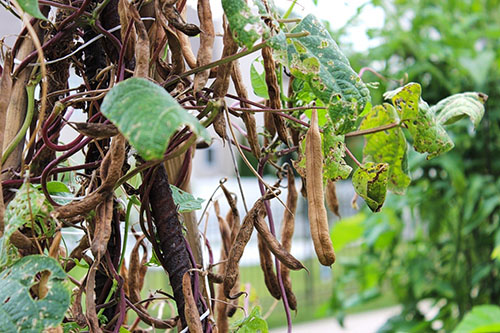
The dried pods are peeled, knocking out the grains. This can be done manually or using various devices.
Vladimir Shevchenko will talk about how to peel beans by hand in his video.
Watch the video from the Kirichuk channel - How to shell beans using an electric drill
After peeling the beans, they should be sorted, removing all rotten and insect-damaged grains.
You can dry beans naturally by spreading them in a small layer on trays or baking sheets. Containers with beans can be placed both in the sun and in a shaded place. The main thing is to maintain good air circulation. It is better to bring the workpiece indoors at night so that the morning dew does not make it damp. Drying time depends on the ambient temperature and weather conditions, and averages 7 – 10 days.
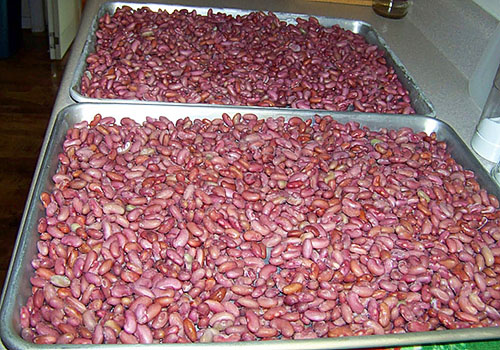
An oven will help speed up this process. To do this, the beans are heated for 1 hour at a temperature of 50 degrees, and then brought to complete drying at a temperature of 60 - 70 degrees. The cabinet door must be kept ajar to allow air to circulate during drying. Drying time 5 – 10 hours.
In an electric dryer, the grains are dried at a temperature of 60 - 70 degrees, periodically rearranging the grids. Drying time depends on the moisture content of the original raw material and takes approximately 5 – 7 hours.
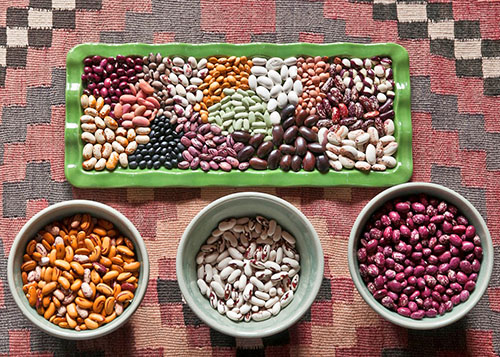
Drying green beans
Harvesting green beans, depending on the variety, falls in July - August. If the summer is hot, the pods ripen faster.
After harvesting, green beans are sorted and beans with signs of disease, spoilage or traces of the presence of insects are sorted. The next step is to cut off the ends of the pods and cut them into small pieces 4–5 centimeters long.
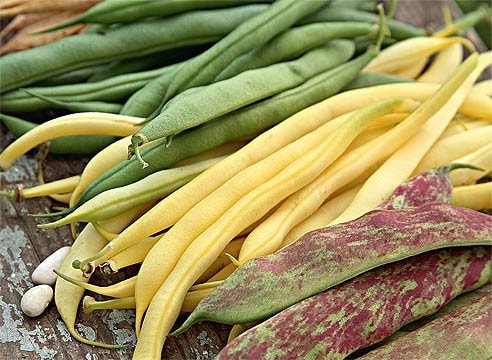
Before drying, the pods are blanched in boiling water for 2 to 3 minutes. You can also steam them in a double boiler for 10 minutes. After heat treatment, the beans need to be cooled in ice water.To get rid of excess moisture, dry the pods on paper towels.
The main methods of drying pods: in the oven or in a special dryer for vegetables and fruits.
The beans are dried in the oven at a temperature of 60 - 70 degrees. The door must be slightly open to ensure optimal air ventilation.
In an electric dryer, the pods are dried at a temperature of 65 - 70 degrees. For more uniform drying, the beans are laid out in one layer, and the trays are swapped every hour. The total drying time is 10 – 15 hours.

When dehydrating green beans, you should take into account the fact that the tissues of the pod completely lose their structure, and when using such a product for culinary purposes, you will not be able to get a truly summer dish from sugar blades. The use of dry green beans is possible in soups, as well as in semi-liquid dishes such as stews.
How to dry bean shells
After peeling, the strongest and cleanest sashes are dried naturally, in a well-ventilated place protected from light. Dry bean caps are used as medicinal raw materials for preparing infusions and decoctions.
How to store dry beans
Bean grains, pods, and husked leaves are stored in cool, dry rooms. Storage containers can be glass jars, cardboard boxes or thick bags. The prepared product must be used within 2 years.










